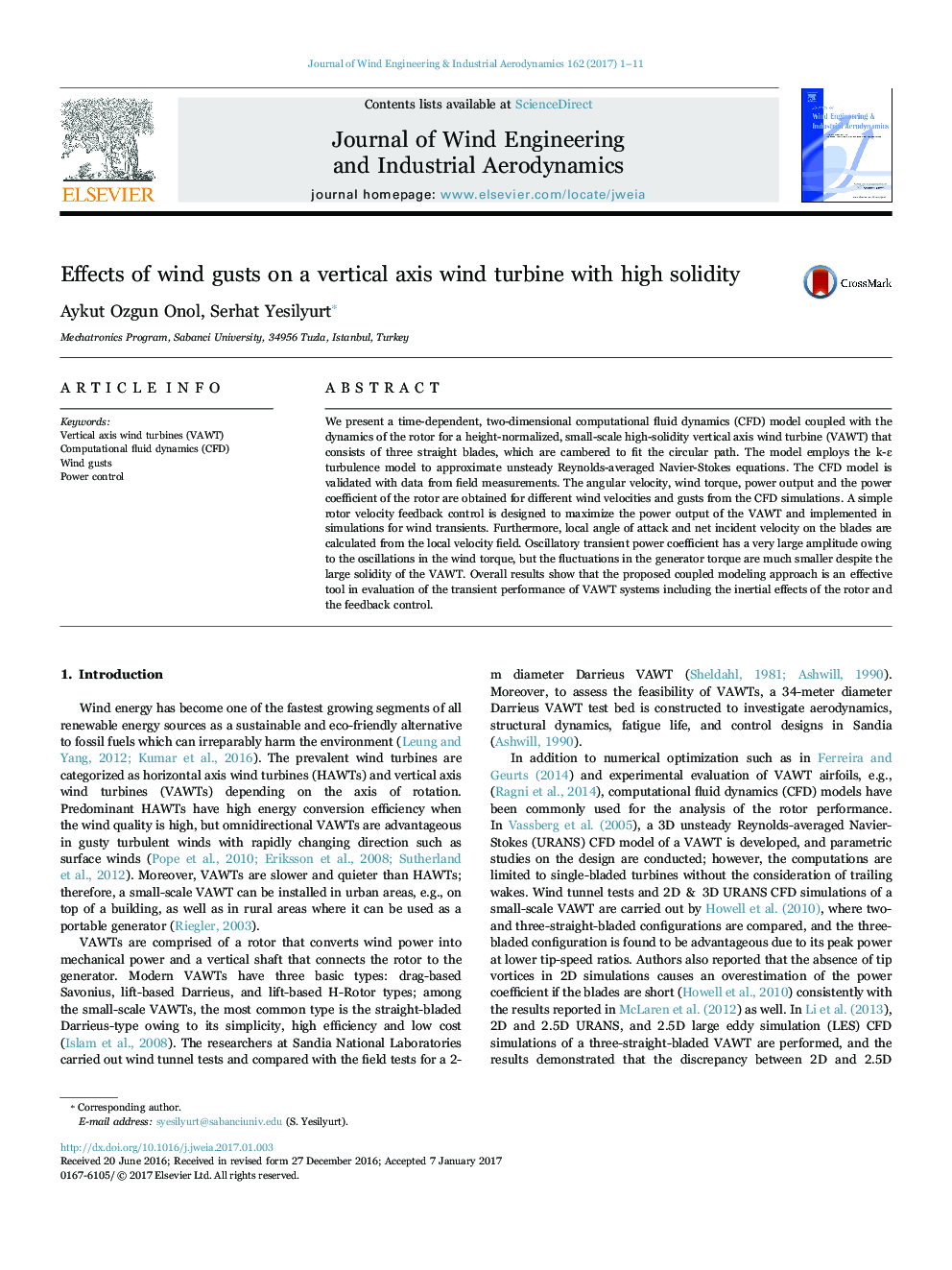| Article ID | Journal | Published Year | Pages | File Type |
|---|---|---|---|---|
| 4924930 | Journal of Wind Engineering and Industrial Aerodynamics | 2017 | 11 Pages |
Abstract
We present a time-dependent, two-dimensional computational fluid dynamics (CFD) model coupled with the dynamics of the rotor for a height-normalized, small-scale high-solidity vertical axis wind turbine (VAWT) that consists of three straight blades, which are cambered to fit the circular path. The model employs the k-ε turbulence model to approximate unsteady Reynolds-averaged Navier-Stokes equations. The CFD model is validated with data from field measurements. The angular velocity, wind torque, power output and the power coefficient of the rotor are obtained for different wind velocities and gusts from the CFD simulations. A simple rotor velocity feedback control is designed to maximize the power output of the VAWT and implemented in simulations for wind transients. Furthermore, local angle of attack and net incident velocity on the blades are calculated from the local velocity field. Oscillatory transient power coefficient has a very large amplitude owing to the oscillations in the wind torque, but the fluctuations in the generator torque are much smaller despite the large solidity of the VAWT. Overall results show that the proposed coupled modeling approach is an effective tool in evaluation of the transient performance of VAWT systems including the inertial effects of the rotor and the feedback control.
Related Topics
Physical Sciences and Engineering
Energy
Renewable Energy, Sustainability and the Environment
Authors
Aykut Ozgun Onol, Serhat Yesilyurt,
